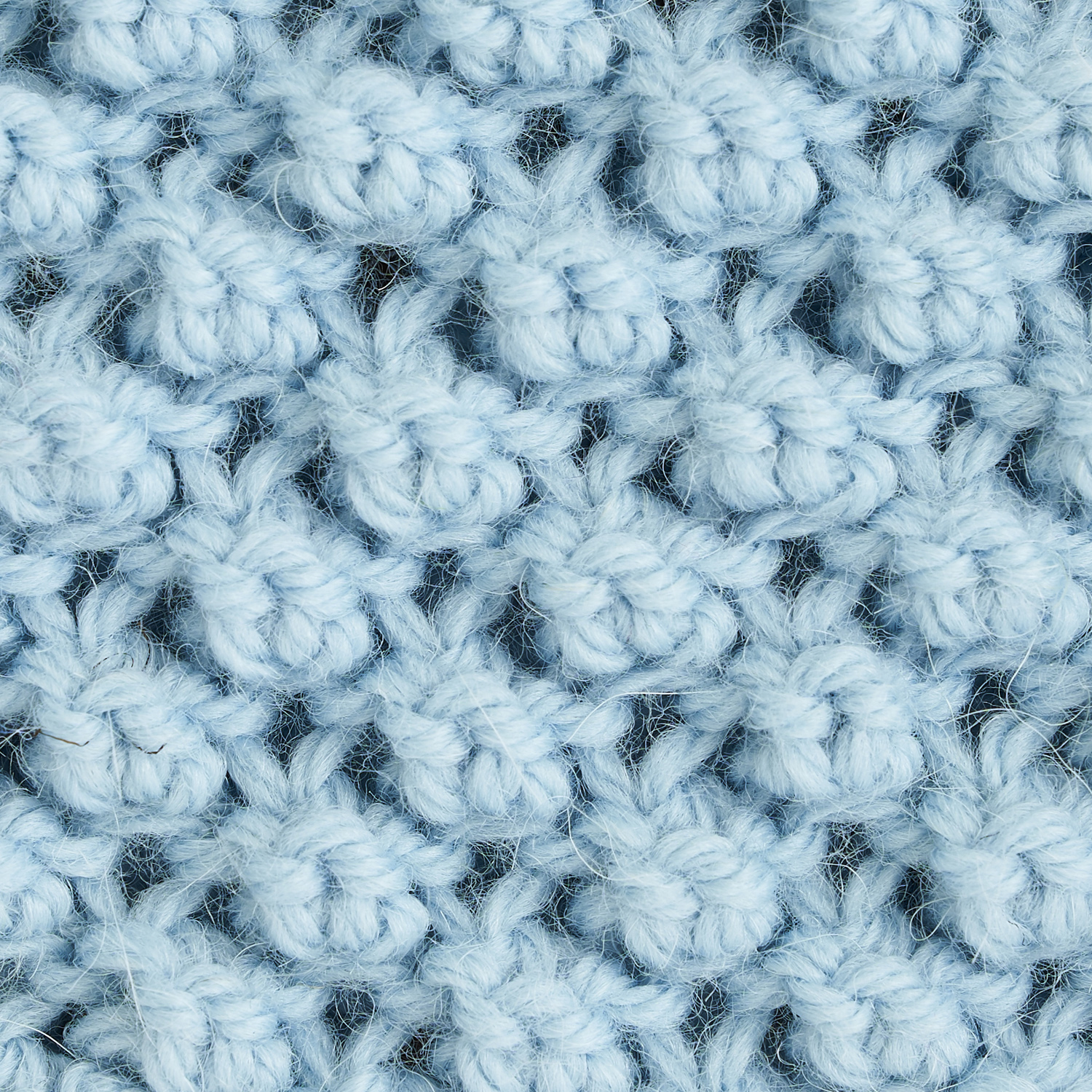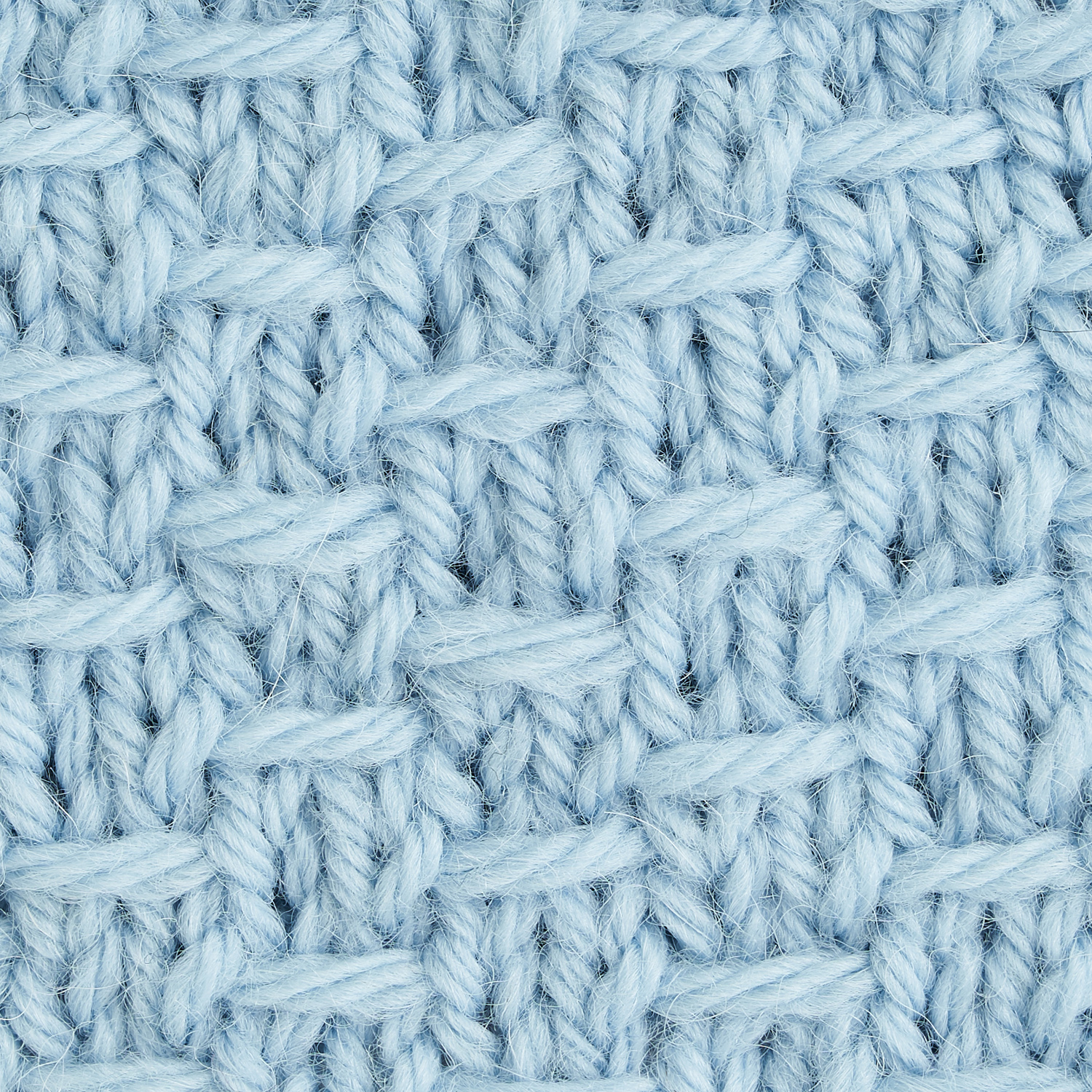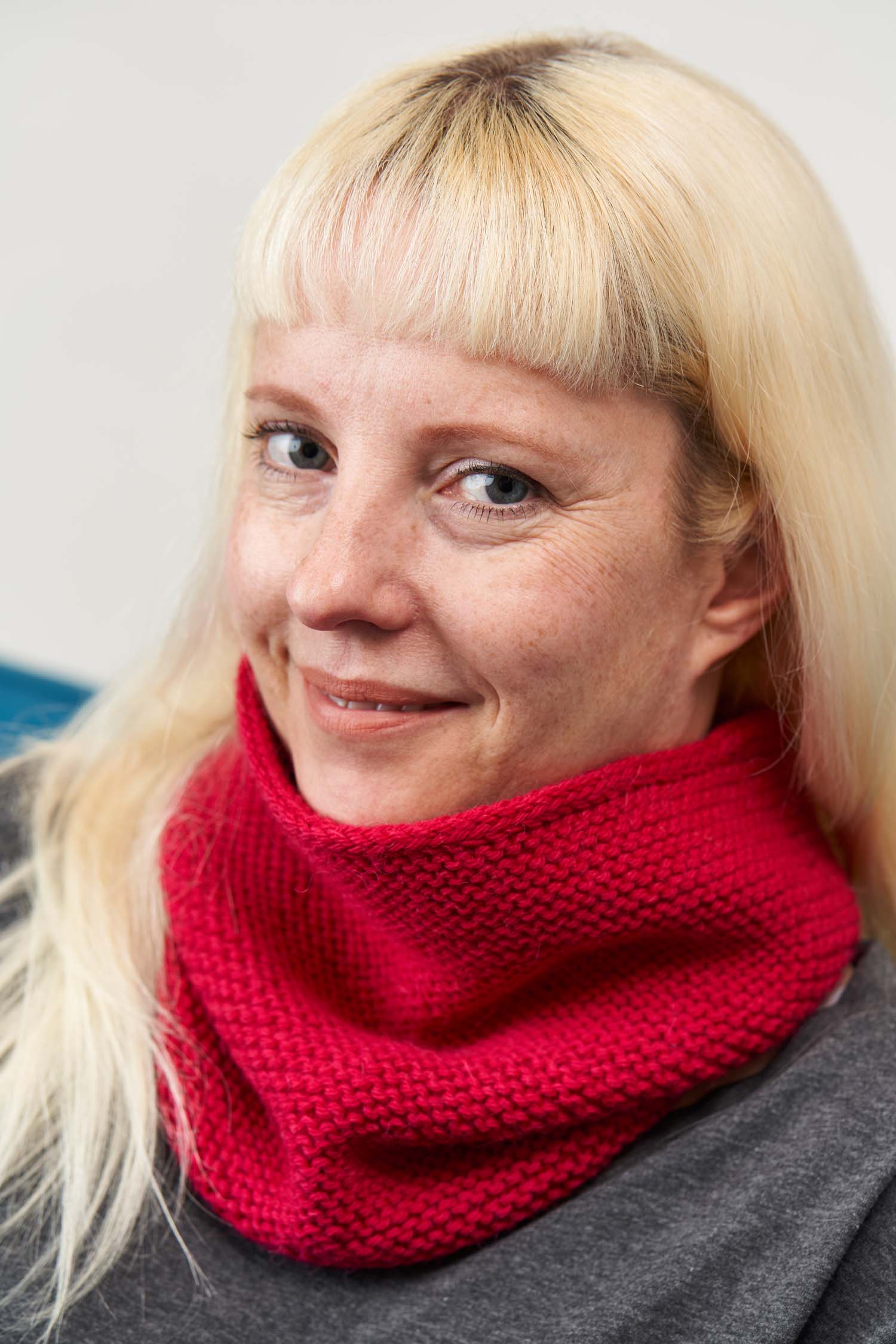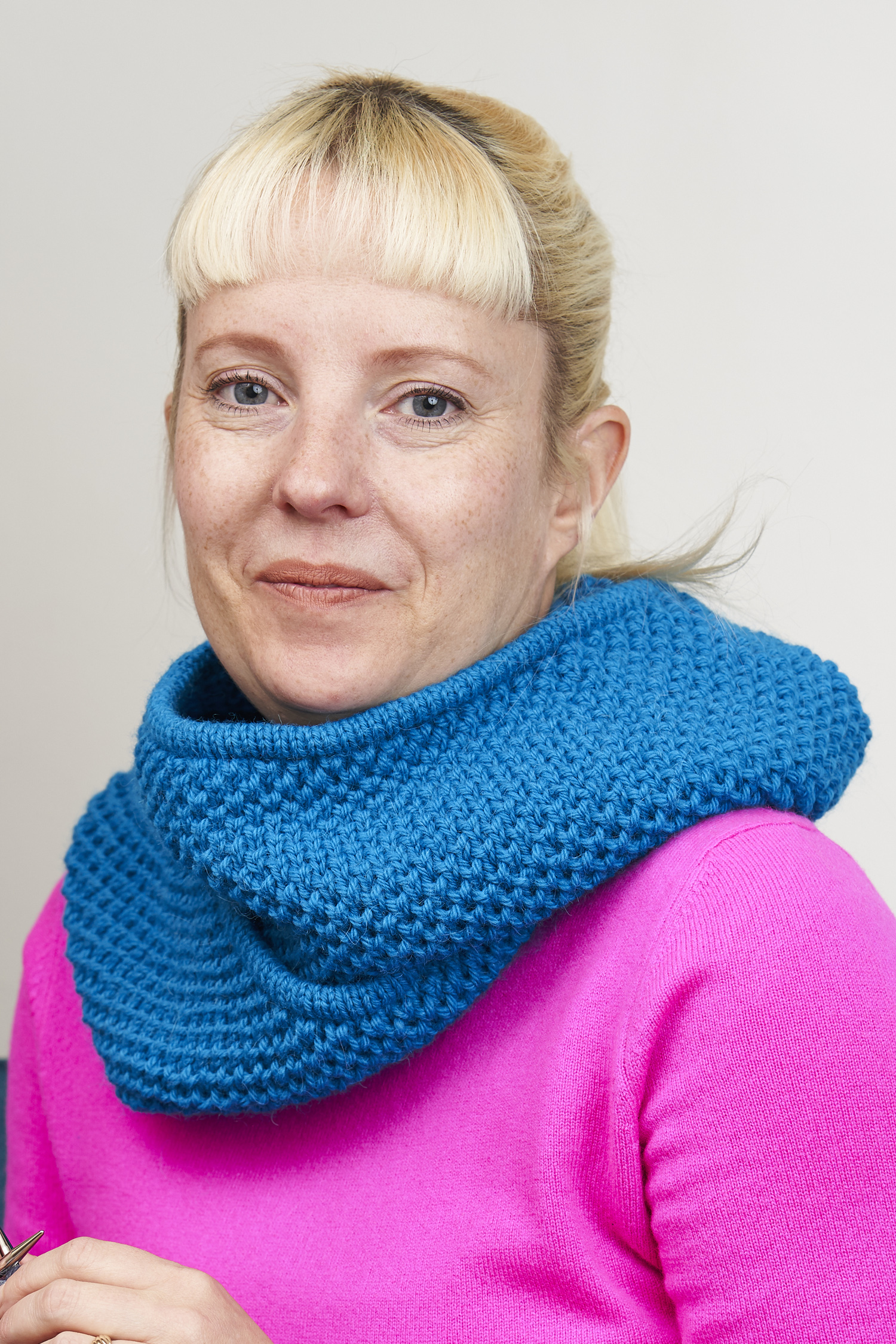It has been brilliant to see a number of people in the helical knitalong saying how magical they are finding 1x1 helical stripes. It’s this sense of wondrous ease, and yet cleverness that has driven the development of the stitch patterns in today’s new chapter of Something New to Learn About Helical Knitting. I had already dipped my toe in the water of helical stitch patterns with my Spiralling Socks designs. They use the combination of a knit round and a slipped stitch pattern to create a pleasing helical effect, and I was quite sure that there must be plenty of other patterns that would be fun to work in this way.
I’ve already talked about eliminating the appearance of a “seam“ in garter stitch worked in the round, and when I started to think about possible helical stitch patterns I wondered whether there were other stitch patterns that suffered from this seam-like appearance at the change in the round. I found a couple of examples – the slip stitch honeycomb pattern used in the popular Honey Cowl, and a nice star stitch (sometimes called daisy stitch) – but I quickly realised that working helically isn’t just about avoiding jogs. In many situations it’s just a really elegant way to work. Once you have established your two helices, each with their own pattern to repeat, it couldn’t be more straightforward.
In each of the stitch patterns shown above, the pattern appears to repeat every 4 rows, and yet they are all worked with just two helices. This is one of the fun parts of helical knitting – your total stitch count doesn’t have to be a multiple of the number of stitches in the pattern repeat.
This is a concept that you have probably already met, even if you weren’t aware of it. So for example, imagine you have a very simple one-round stitch pattern with a 2-stitch repeat (k1, p1 for example). If you work that in the round, over an even number of stitches, the knits will always line up with knits, and the purls will always line up with purls, and you will have 1x1 rib. If on the other hand you work that repeat over an odd number of stitches, and just keep repeating (k1, p1) without reseting at the start of the round, the knits and purls will no longer line up on top of each other, and you will have moss stitch (US seed stitch) instead.
Woven Diagonal Herringbone Stitch.
This can be applied to helical stitch patterns too. In all of the examples in chapter 2, the yarn A helix always either knits or purls. There’s no pattern repeat to worry about, and also no need to worry about how the two spirals line up with each other. Yarn B then does the fancy business, and has a small pattern repeat that is worked continuously. When the total stitch count isn’t a multiple of the pattern repeat, you can play with the pattern offset to make it appear is if it’s a 4-round pattern. With larger stitch patterns, such as the Woven Diagonal Herringbone shown above, you can turn what would be a 12-round pattern into something far simpler worked with just two helices. This pleases me in a way that’s hard to explain!
Along with the tutorials and stitch dictionary, chapter 2 contains two cowl patterns. The Witney cowl is a simple garter stitch cowl that’s warm and cosy, and would be a simple TV or knit night project, and a perfect gift. The Cortona cowl uses a helical tweed knot stitch, which creates a thick, light fabric. This is a longer cowl and is designed to be wrapped round twice for maximum snuggliness! The Witney cowl, like Bramante, uses an i-cord cast off at both ends, while Cortona features a narrow folded hem at each end. The elements of these cowls are intended to be quite mix and match. You could swap stitch patterns using the stitch dictionary, or work your Cortona with an i-cord edging. The choice is endless, and of course the stitch pattern ideas I’ve provided in this chapter are just the beginning. I’m sure that there are endless possibilities, and I can’t wait to see what people come up with!
Many thanks to our lovely moderator Maylin, who knitted up the Witney sample for us, as well as to Kim who helped knit part of the Cortona cowl while I took a much needed holiday. Becki Noble from my favourite local fabric shop, Millie Moon, was kind enough to model for the helical collection. Thank you lovely! And all of the images in this post were taken by the wonderful Jesse Wild – multiple thanks to you as always!
If you’d like to join the helical fun, grab a copy of the Something New to Learn About Helical Knitting ebook from our online shop, or via Ravelry, and some Something to Knit With Aran, and join the knitalong in our Ravelry group. The eBook costs £13.99 (this collection is not available in print), and our aran yarn costs £8.00 per skein. Don’t forget that the eBook contains a 10% off discount code for use in our online shop until 27th November 2018 (not valid with any other offer).









